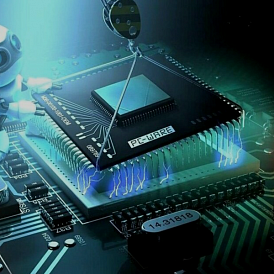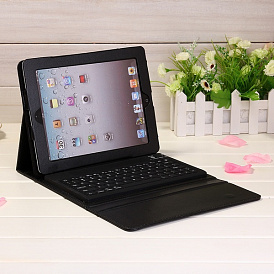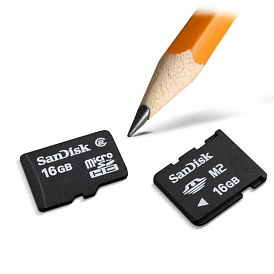Compare USB 2.0 and USB 3.0 standards | features and differences
Technical progress in relation to computers is particularly pronounced. Almost every year, new technologies, interfaces, systems, chips and other architectures are introduced. It affects such familiar things as USB.
For example, starting from 2017-2018, the USB Type-C interface began to be actively introduced. It has a symmetric, oval connector, and is generally not compatible with traditional rectangular Type-A.
But if Type-C differs dramatically from Type-A, then the differences between USB 2.0 and USB 3.0 are not so obvious. Let's figure out what they are and whether to overpay for a computer or USB flash drive with a new interface.
USB 2.0

USB 2.0 is a relatively old standard. The technology was introduced in early 2000 and at that time offered such a high data transfer rate that it received a “subtitle” High-Speed.
In particular, the maximum data transfer rate regulated by this protocol is 480 megabytes (60 megabytes) per second. It is achieved on devices with Hi-Speed support. These are various flash drives, cameras, cameras and so on.
However, the speed parameter is theoretical. In practice, the average data transfer rate is about 20 megabytes per second.
When developing the standard 2.0, the creators sought to ensure maximum compatibility with outdated interfaces. So, this is still a four-pin connector (5-pin on devices with grounding), through which a current with a voltage of 5 Volts and a force of 0.5 Amp on computers is transmitted. However, reworking the bus controller made it possible to increase the speed of data transfer.
In general, currently the standard 2.0 is still a universal interface that will even be supported for at least several years. The low price of controllers, a huge number of compatible devices and a sophisticated interaction mechanism make it suitable for use in home and office environments.
Virtues
-
A huge number of compatible devices;
-
Support for older operating systems;
-
Low load on the power supply or battery.
disadvantages
- Slow.
More precisely, it is relatively slow. Generation 3.0, of course, exceeds its bandwidth, but the actual data transfer rate depends on the performance of the drive, file type, file system and many third-party parameters.
USB 3.0

The USB 3.0 interface was introduced in 2008 and, interestingly, was not an improvement of the previous generation, but its complete processing. The changes even affected the design of the connector!
So, in Superspeed revisions nine contacts are used: 2 main signal, 2 main current, 2 additional signal, 2 additional current and - optionally - "ground". However, the main ones are located in the same places as the standard 2.0, thus achieving compatibility with previous generations.
Also increased the strength of the current supplied to the connector - now it is 0.9 Amperes Thanks to this, we managed to achieve three indicators:
-
To one connector on the motherboard, you can connect more devices using the tree method (that is, a keyboard with an external USB connector in the motherboard, a card reader in the keyboard, and a flash drive, for example);
-
Some devices no longer require external power to operate, it takes all the necessary current from the interface;
-
Mobile devices connected to the computer charge faster.
But the main advantage of the audit is an increased data transfer rate. In standard 3.0, it is up to 5 gigabits (0.6 gigabytes) per second. Of course, this is a theoretical indicator, in practice it is limited by the capabilities of the receiving device.
Interface generation 3.0 opened the way for new opportunities connected devices. So, in his subsequent revisions you can find:
-
Combination with DisplayPort to connect screens;
-
Thunderbolt support for the highest possible data transfer rate (this is necessary, for example, for the operation of external video cards);
-
Support for two-way current transfer (that is, choose a master device that charges the slave - for example, you can charge the laptop from a smartphone).
This development is not limited. In the future, other ways of using connectors with maximum benefit will be found.
Virtues
-
Increased data transfer rate;
-
Increased current to power connected devices;
-
The possibility of equipping the connector with additional functions;
-
Full backward compatibility with legacy USB family interfaces.
disadvantages
-
High cost;
-
Increased laptop battery discharge.
Especially the high cost of USB 3.0 standard is manifested in the pricing policy of flash drives and similar external media. So, a device equipped with 2.0, with a capacity of 8 GB, can now be bought for 3-5 dollars. But for a flash drive of the same volume, but already with 3.0, you have to pay 10-15 dollars.
Versions 3.1 and 3.2
Further development of the interface led to the fact that developers are faced with hardware limitations. It was not possible to equip the connector with a bunch of connectors and at the same time ensure compatibility with outdated iterations. Then it was decided to recycle it.
And so Type-C appeared. This type of interface is equipped with 24 pins, thanks to which we managed to achieve many additional features. Firstly, it is symmetrical, so you no longer need to turn the flash drive before installation. Secondly, it fully supports Power Delivery and can transmit up to 20 Volts of current. And finally, the maximum current strength in it is 5 Amps!
True, in the framework of 3.0, these additional features do not fit. So two revisions appeared - 3.1 and 3.2. They managed to use additional data transmission channels, so that the maximum bandwidth was 10 gigabits (1.2 gigabytes) per second!
But It is worth noting that there are no devices that support such high speeds yet. Usually there is a limit on the speed of the drive or the clock frequency of the controller.
Comparison
So, USB 2.0 and USB 3.0 are structurally and technologically different. Now is the time to compare them and choose what is best!
|
Parameter |
USB 2.0 |
USB 3.0 |
|
Extreme Data Rate |
60 megabytes per second |
600 megabytes per second |
|
Current on the connector |
0.5 A |
0.9 A |
|
Compatible with older operating systems |
From Windows XP and later |
From Windows 8 and newer. Windows 7 to SP1 requires driver installation |
|
Compatibility with legacy generations |
Feedback |
Feedback |
|
Additional functions |
Not |
Power supply (Power-over-USB, USB Power Delivery), work in interfaces Thunderbolt, DisplayPort |
|
Price |
Relatively low |
Relatively high |
USB 3.0 is mainly used for data and power. It is necessary for fast operation of connected flash drives, smartphones and other drives. Also, in some cases, external devices such as video cards, sound adapters, and so on are attached to it.
USB 2.0 is used in devices that do not require the highest speed.It can even now, in 2019, be found in the latest keyboards, mice, printers and scanners. Low price, good compatibility and sufficient bandwidth for most tasks will remain relevant for a long time.













